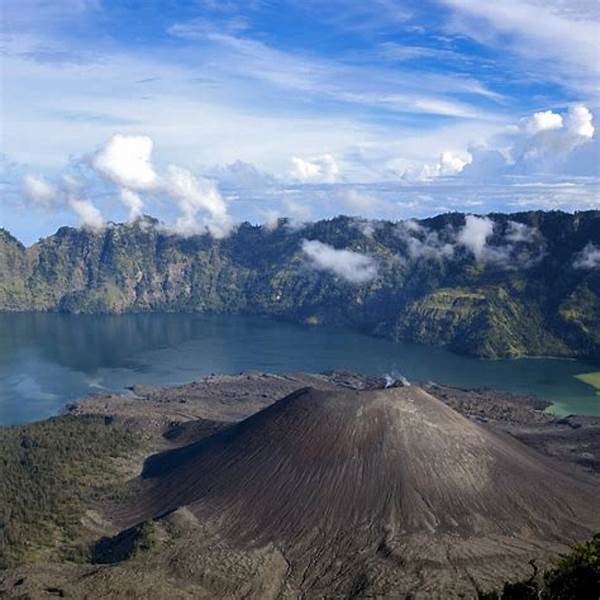Nestled in the heart of the Coral Triangle, Raja Ampat is a destination that conjures images of pristine turquoise waters, diverse marine life, and idyllic islands that seem to float like emerald jewels against the horizon. This Indonesian archipelago is not just a paradise for the intrepid traveler; it has become a beacon of environmental consciousness and conservation. From the vibrant corals to the fluttering wings of endemic birds, Raja Ampat is a kaleidoscope of nature, one that compels even the most jaded tourist to pause and reflect on the importance of preserving such beauty for future generations.
Read More : Bandung Natural Tourist Destinations Sunrise Trekking Admired
Visiting Raja Ampat is not just about enjoying its breathtaking landscapes and underwater wonders. It’s about experiencing a place that is not only recognized for its incredible biodiversity but also celebrated for its pioneering efforts in conservation. This natural tourist destination inspires conservation in a way that few places do, and as we look towards 2025, understanding why Raja Ampat acts as a torchbearer for environmental stewardship is crucial.
The Richness Beneath the Waves
The reason why Raja Ampat natural tourist destination inspires conservation 2025 lies in its ecosystem. This region showcases an astonishing array of marine life, serving as a foundational biodiversity hotspot. According to scientific research, it houses over 1,400 species of fish and 600 species of coral within its waters. This biodiversity is not just a source of fascination for divers and marine biologists but also an essential asset for the global ecosystem, maintaining the health and balance of our oceans.
Dr. Marine Johnson, a renowned marine biologist, humorously describes Raja Ampat as “the underwater version of an avian birdwatchers’ paradise, only with a lot more smartly dressed fish.” Her perspective underscores the entertainment and educational value of visiting this region while emphasizing its fragile state. The necessity to protect such biodiversity becomes ever more compelling, and Raja Ampat has become a model for marine protection efforts worldwide.
Community and Conservation: A Symbiotic Relationship
In Raja Ampat, conservation isn’t merely a buzzword; it’s a lifestyle. The local communities have become vital stewards of their environment, fully embracing initiatives that support sustainable tourism and marine protection. Programs encouraging eco-friendly practices are frequently held, involving both locals and visitors, promoting a culture of conservation that transcends traditional tourism boundaries.
The connection between community welfare and conservation in Raja Ampat illustrates why Raja Ampat natural tourist destination inspires conservation 2025. Conservation efforts here include restricting fishing zones, establishing marine protected areas, and promoting alternative livelihoods. The remarkable synergy between community-led conservation projects and tourism initiatives showcases a successful model, highlighting how tourism can be a driving force for positive environmental change.
The Role of Tourism in Preservation
But how does tourism play a role in conservation? The answer lies in economic incentives paired with awareness. Raja Ampat’s appeal to eco-conscious travelers has spurred local investments in sustainable practices. These efforts are often driven by humorously candid marketing campaigns designed to attract the global traveler while educating them on their ecological footprint.
Raja Ampat’s tourism guides often share “fish tales” not only of grand marine adventures but of conservation successes, proving that humor and education can co-exist. Visitors leave with not just memories, but a newfound understanding and commitment to ocean conservation. Conservation and economics dance a beautifully choreographed routine in Raja Ampat, fueling both preservation efforts and community empowerment.
Looking Forward: Conservation Targets for 2025
As we edge closer to 2025, the focus on why Raja Ampat natural tourist destination inspires conservation 2025 becomes more poignant. The combination of academic studies, traveler testimonials, and conservation achievements weave a rich tapestry of commitment and action. The region sets ambitious targets for expanding marine protected areas and reducing the ecological footprint of tourism.
Read More : Recommended Riverside Parks With Exotic Tropical Flower Gardens
Government initiatives like the “Conservation Vision 2025” have set forward concrete steps toward attaining these goals. By collaborating with NGOs, scientists, and the local populace, Raja Ampat reinforces its status as an exemplar of eco-tourism and conservation.
Achievements and Milestones
By continuing on this path, Raja Ampat ensures that its natural beauty and biodiversity are preserved, providing a template for other regions around the world to follow.
Why Raja Ampat Serves as a Beacon of Hope
Raja Ampat is a testament to the power of conservation-driven tourism. Its story is one of nature’s grandeur matched with human resilience and creativity. As we reflect on why Raja Ampat natural tourist destination inspires conservation 2025, we see a narrative woven with threads of ecological riches, community spirit, and purposeful action.
This enchanting region reminds us of the power of collective human effort to safeguard our planet. By exploring Raja Ampat, travel enthusiasts not only partake in an awe-inspiring adventure but also support a bigger cause—one that promises a sustainable future for generations yet to come.
Highlights of Raja Ampat’s Conservation Legacy
As we take these lessons into our own lives, we contribute to transforming Raja Ampat into an enlightening destination—a lighthouse of conservation success in a world increasingly needing sustainable role models.



